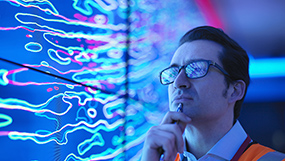Web 3.0 is the NextGen of the internet, where users are able to interact with each other and with data in more meaningful ways. Web 2.0 was all about communication and collaboration, while Web 3.0 will be about understanding and meaning.
Web 2.0 was all about user-generated content and social media. Web 3.0 is all about data. The rise of big data and artificial intelligence is driving the development of web 3.0.
One of the major differences between Web 2.0 and Web 3.0 is that the latter will be powered by artificial intelligence (AI). This means that web pages will be able to understand the user’s needs and provide them with the relevant information.
In addition, Web 3.0 will be more decentralized than its predecessor. This means that there will be no need for central authorities, such as Google or Facebook, to control the flow of information. Instead, users will be able to connect directly with each other and with data.
Web 3.0 will use more sophisticated algorithms to make sense of the vast amount of data on the internet, and it will be able to provide more targeted results to users. Additionally, web 3.0 will have a greater focus on personalization and customization.
Web 3.0 has the potential to transform the way we use the internet and it will undoubtedly have a huge impact on our lives.
Web 3.0 is the latest generation of the World Wide Web. It is a more interactive and personalized web experience that is built on emerging technologies such as artificial intelligence (AI), virtual reality (VR), and the internet of things (IoT).
Web 2.0 was the previous generation of the World Wide Web. It was a more static web experience that was reliant on traditional web technologies such as HTML and CSS.
Web 3.0 promises a more immersive and personalized web experience. With AI, VR, and IoT, users will be able to interact with the web in new ways that were not possible with Web 2.0. Web 3.0 is still in its early stages, and it will likely take several years for it to reach its full potential. Once it does, it has the potential to revolutionize the way we use the internet.











